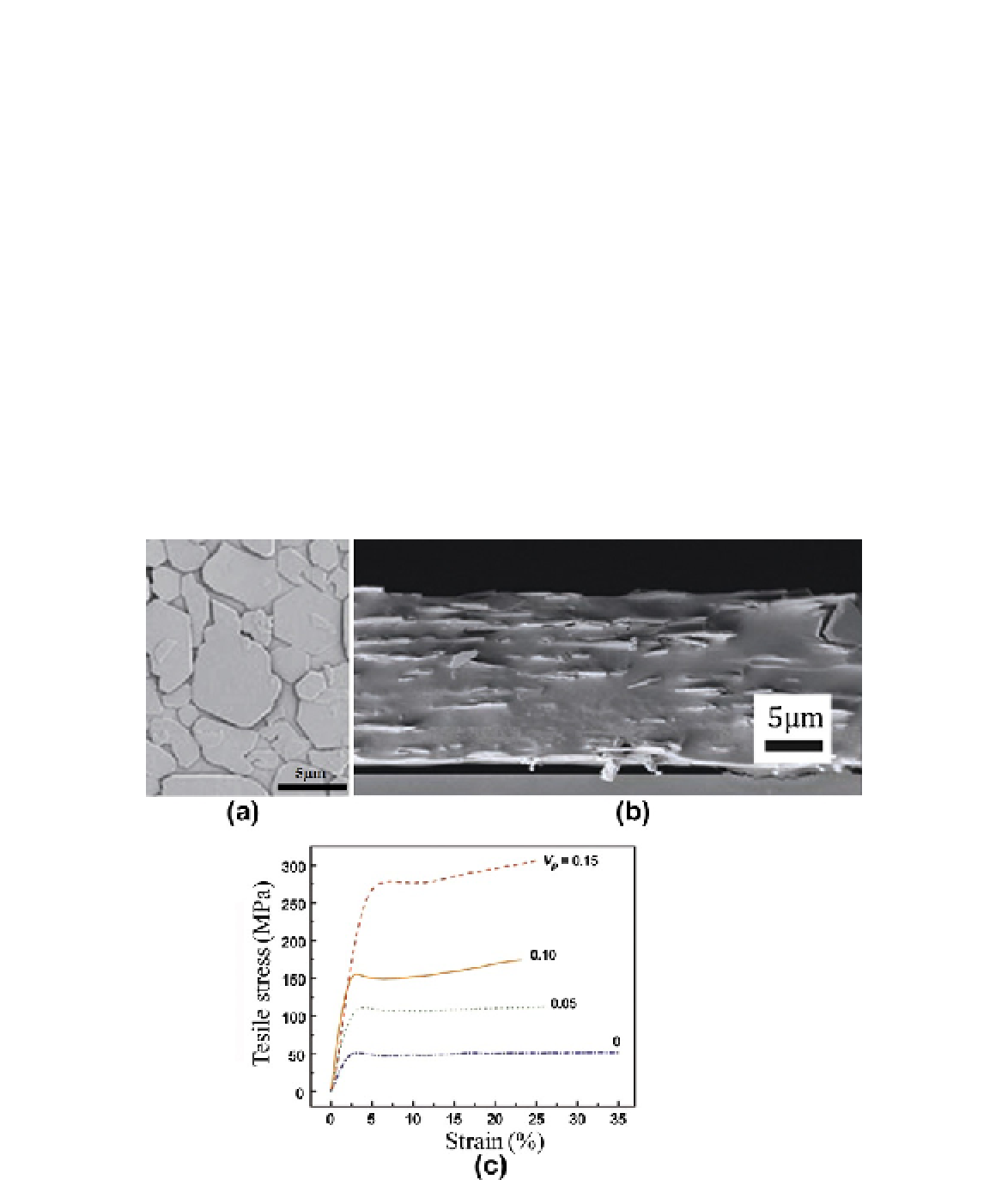Biomedical Engineering Reference
In-Depth Information
substrate and coated with a polymer so that a
bilayer of inorganic/organic materials is pro-
duced. This process is repeated several times to
fabricate a multilayered composite with total
thickness on the order of few tens of microme-
ters (
Figure 3.11
b). A free-standing composite
film is then obtained by peeling this multilayer
off with a razor blade
[46]
.
Bonderer
et al
.
[65]
used this strategy to fab-
ricate an alumina/chitosan hybrid material with
mineral concentration of almost 15 %v/v, which
shows a high level of inelastic deformation (17%
strain to failure). The tensile stress-strain curves
of four sets of composites containing different
mineral concentrations are shown in
Figure
3.11
c, indicating that increasing the mineral con-
centration up to 15 %v/v results in overall
improved tensile behavior. The large number of
hydrogen bonds between the hydrophobic sur-
face of the inorganic platelets and chitosan
results in highly efficient load transfer between
the inclusions and the matrix.
3.4.3 Direct-Deposition Techniques
Deposition techniques such as sequential
sputtering
[66]
, inkjet deposition
[67]
, and spin
coating
[68]
have been utilized for fabrication of
artificial nacres. Sequential ion-beam sputtering
of metal/oxide layers will result in a layered
structure with individual layer thickness on
the order of several nanometers. Using this
technique, He
et al
.
[66]
reported a layered TiN/
Pt nanocomposite, which is harder than the
FIGURE 3.11
A SEM micrograph of one monolayer of inorganic platelets assembled by hydrophobic interactions and
deposited on a substrate, (b) a cross-section of the multilayered composite (scale bar
=
5
μ
m), and (c) tensile behavior of the
composites with different mineral concentration. Adapted from Ref.
46
.

